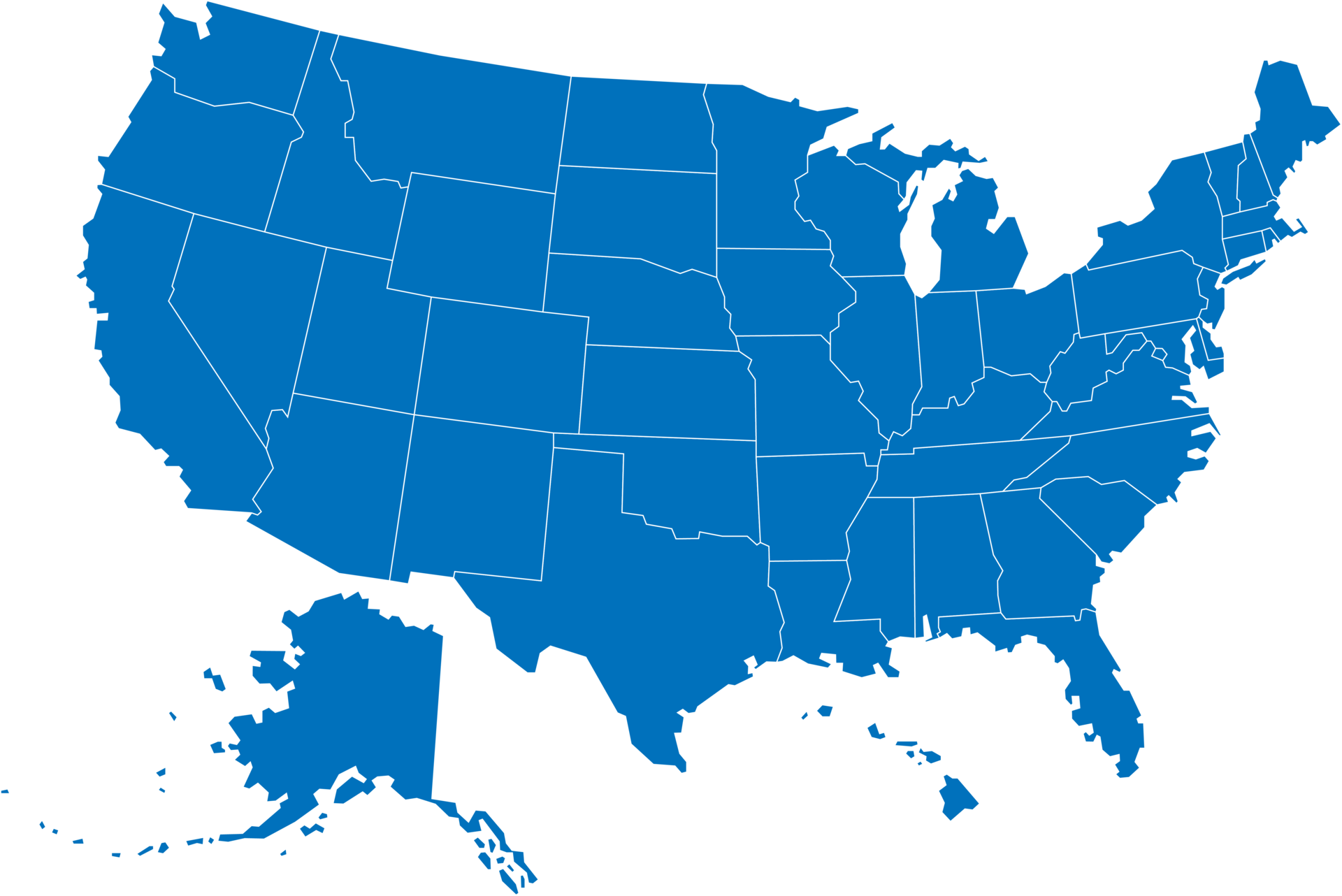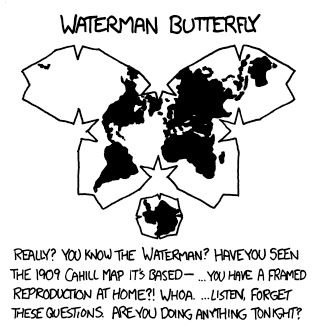Edit: source with some more info
https://www.nytimes.com/interactive/2015/12/24/upshot/24up-family.html
I like that they have to use median, because I’m often having to find examples of why you’d use that over mean. My wife for instance is over 5k miles from her mom, and I imagine that’s true of most immigrants. So the skew is probably really, really strong if you didn’t use a non parametric measure like the median.
In other words, I’m stealing this for my stats class.
I like using both. An average of say 300 miles with a median of 5 miles would show you that there is significant bias toward the lower end.
I’m not a statistician but that’s my understanding of the two metrics
Yeah but you can’t really do that with a map. In a table you could. A report would likely report both, but also differentiate groups because you don’t usually want to report skewed data without explaining why.
I bet if go down to county or city level, you‘ll find differently colored areas such as cities relying on old steel, coal, textile economies. At least here in Germany I know areas where many people left their home areas in the 90ies. But that’s probably a geography lesson.
Yup! And if you have the right dashboard you can usually drill down by location down to that level and even include those additional factors as an overlay. I used to do that using census and labor statistics data, and it is indeed very cool.
I live really close to my mom. She doesn’t live near me tho :(
My brain is trying hard to reconcile those two statements
Oh, shit, I connected the dots. I’m sorry
Coincidentally, 18 miles is almost exactly the maximum distance you can be from the sea and still be in Denmark.
Not advocating throwing your parents in the sea, just bragging about one of the advantages of living in a tiny country consisting mostly of sea and islands 😁
Nice
i will however advocate for throwing denmark in the sea
Would be interesting to see the methodology on this, or to see how much it has changed since this was published, or to see it broken down at a county level.
I also want to see the median, mode, and quartiles… for the last 25 years. I wonder if the recent rise in individuals living with parents/relatives has had an influence.
I wonder if the recent rise in individuals living with parents/relatives has had an influence
More people living zero inches away from their parents’ home WOULD decrease the average distance, yes 😛
That’s insane.
I’d need to see the methodology. That’s just way too close.
Bruh, that’s been the case for literally the entirety of human history. In fact, way closer.
Given how humans evolved, it’s much crazier that so many people move hundreds and thousands of miles away from their families and support systems.
If anything, you’re underplaying it! Agriculture allowed us to stop moving. Not having to travel is what made civilizations
It makes some sort of sense imo. What the graph is essentially saying is that most people stay in the same city as their parents. An 18 mile rage around a house covers most of a city. It’s probably thousands of people who live in the same neighborhood as their parents skewed by the handful that move out of their home city.
It’s crazy to me. Maybe having bad parents has skewed my perspective.
Bad parents might have had an influence, but I had decent parents, and I still moved to the other side of the planet at 20. Do you think you would you have been happy, staying put? 'Cause me, I wouldn’t do anything differently (well, a few things, but not related to my moving around).
I loved my parents, but once I was on my own I was happy to live a few hours drive away.
I have no desire to stay where I am personally, just a waiting game to pool together enough money to make job hunting elsewhere… viable. Cars paid off next year, that’s probably when I’ll start seriously looking
Yeah horrible parents or rich parents are really the two big reasons one can move out. Otherwise there’s really no reason to do it if you’ve got your whole support and friend network in the city.
some of us had bad parents but still needed to take care of them when they became elderly. tis grace.
My city is 6 km across (3,7 miles)
Idk about the rest of the world, but most people I know in the US seem to stay in their hometown or a nearby town
You should see Belgium, many children refuse to move out of the same village as their mothers, much less 50km. It is probably similar in italy for example. Would be interesting to see state on Europe and Asia too!
I’m thousands of miles
Hi, thousands of miles. Are you like, a hivemind of everyone named Miles or something?
Are you like, a hivemind of everyone named Miles or something?
That’s only like 3 people.
The median distance without anything else is worthless. The median only represents the “typical American” if we’re working with some kind of bell curve, which can’t be true since a sizable chunk of people still lives with their parents. For all I know 49% of people could be living with their parents and another 49% could have moved far away - the median still only shows a data point from the remaining 2% of people.
If the data is normally distributed (as in bell shaped), the mean and median will be the same. The problem is that the data is probably very skewed, so the median is probably a better representation of the central tendency than the mean. Also, it’s incorrect to say it only represents 2% of people; it’s more that every person is only represented by their position in the set. Quintiles, quartiles, and percentiles work the same way. I like to think of it as everyone being a single vote, unweighted by value.
That said, if you wanted another acceptable alternative, you can also remove all outliers and likely return the curve back to normal. The problem there is you’d probably be removing every immigrant, so you wouldn’t be representing all Americans. Pros and cons, but given medians are almost only used to describe data and not analyze it, since it’s not compatable with a lot of statistics. A real analyst would probably just dummy code immigration in a regression and provide coefficients for both groups, anyway.
That said, if you wanted another acceptable alternative, you can also remove all outliers and likely return the curve back to normal.
I’m not sure I would call that “acceptable.” I would be more likely to call it “destroying the interesting features of the data.”
Acceptable in the statistical sense. Normality is required by a lot of statistical tests, so it’s done a lot. There are better ways to do it without losing important insights though, hence what I said later in that paragraph.
This “anything else” usually is the variance or standard deviation, but I doubt anyone without education in statistics can grasp what they mean.
I inherited my childhood home and I’m still over 1,600 miles away from my mother. But she preferred her own childhood home on the other side of the country and moved there as soon as she divorced my dad. I’m still very close with my mother. Just not… physically.
1.4k miles checking in. But she was pissed at me for moving and took several years to stop with the “move back” jabs. But we’re also close
And this is in 2015, after we’d recovered from the great recession but before the housing/rental market forced a lot of families back into multi-generational housing situations.
Absolutely!
It’s probably also not uncommon for people who can work from home to have moved outward to lower cost-of-living areas during this time, but I bet that pales in comparison to the increase of young adults living with their parents.
Well…… You’re not wrong…. but she’s dead so she won’t be moving anywhere anytime soon
Does this factor in city dwellers? A lot of cities, you’ve got people that can’t just up and move to the next town over like we can out here in the boonies. You move from some parts of NYC 18 miles away and still be in the same city, but still effectively be like moving to another town.
I’d be interested to see what would happen to the numbers if you split out cities at given population levels.
If you move 18 miles away from your mother and you’re still in the same city, you’re still 18 miles away from her…
That’s not the point.
So, if you take new York State as an example. If the average for the state is 18 miles (I can’t see the post when replying to a comment in this app, so that’s just using the same number as an example), do the cities skew that?
Like, if NYC and Albany have their own average of five miles, but people outside cities average 25 (or whatever it would be, I’m not doing math for this lol), that’s an interesting thing.
That’s what I’m talking about.
Just follow the links in the article and check the study?
http://www.federalreserve.gov/pubs/feds/2011/201130/201130pap.pdf
Me: maps can be creative, but they can’t surprise me.
OP: hold my beer.
It would be interesting to scale this by population density

See also: https://xkcd.com/1138/
Right, but that’s exactly my point, it likely wouldn’t just be one flat color. If you scale it by population density you get a map displaying the average distance between kids and parents compared to the average distance between any two people which I would expect to be 1. non-uniform and 2. more meaningful than raw kid-parent distance. The current map is useful and accurate, but I think the more interesting contributing factors are being drowned out by raw population density. Deciding what factors to control for (ie. pop. density, wealth level, etc.) results in a different meaningful outcome and is very important to consider when making conclusions based on the map. The image’s scale is probably too granular to do this analysis but if the raw data is finer-grained I would love to see a density-controlled version.
Right, but that’s exactly my point, it likely wouldn’t just be one flat color. If you scale it by population density you get a map displaying the average distance between kids and parents compared to the average distance between any two people which I would expect to be 1. non-uniform…
My point was that I expect exactly the opposite: that the average distance between kids and parents is pretty much exactly proportional to the average distance between any two people.
This is why we need the map! I’m curious which prediction would be accurate.
They mention a few major influences, and population density is one of them. In areas with more sprawl and land, it’s more likely for people to drive longer distances. (This probably explains the Midwest and West)
They also mention poverty being a factor, where it’s more common for families to live together, or very close, in order to help support each other. (so probably explains the South)
Another thing to consider is grandmothers helping when couples have young children. I bet if we overlayed a map of locations where people are more likely to have kids, we’d see a trend too.
It would be neat to have an interactive version where you can select different factors to control for, including pop. density, wealth level, children per family, etc.
Hmm. And it pretty much just varies with density, looks like. What is that in terms of mom’s ranking on list of closest people?
Removed by mod
I would assume so. That would balance the people who live across the country from her.
If you assume the number of people who live across the country from their mother is the same number of people who live with their mother, the balance is completely in favor of the across country people. the difference between 0 and 18 is way less than the difference between 18 and 1200.
This was explained in a different comment.












